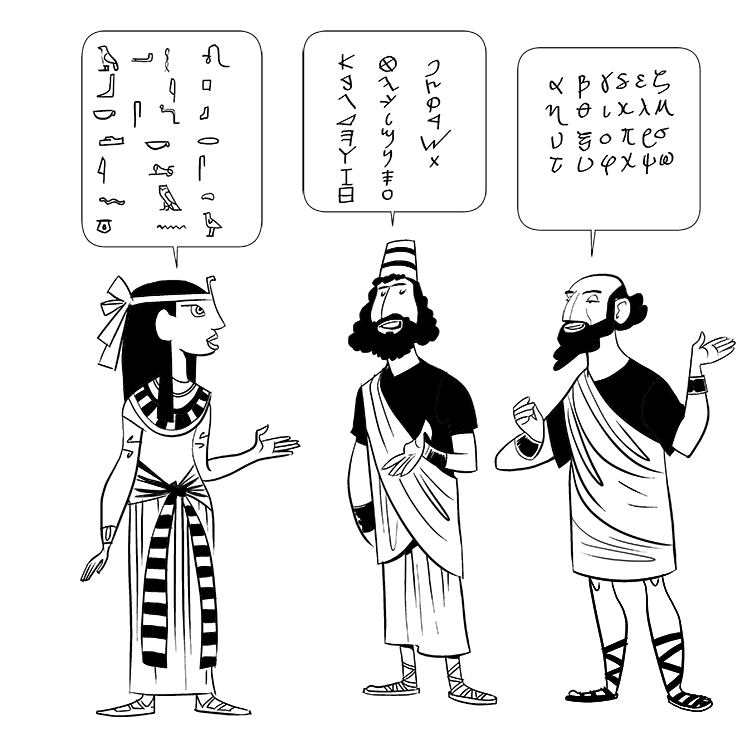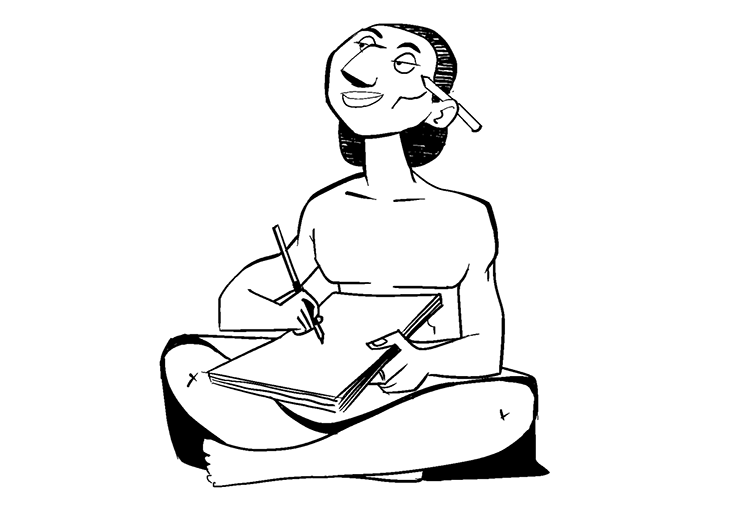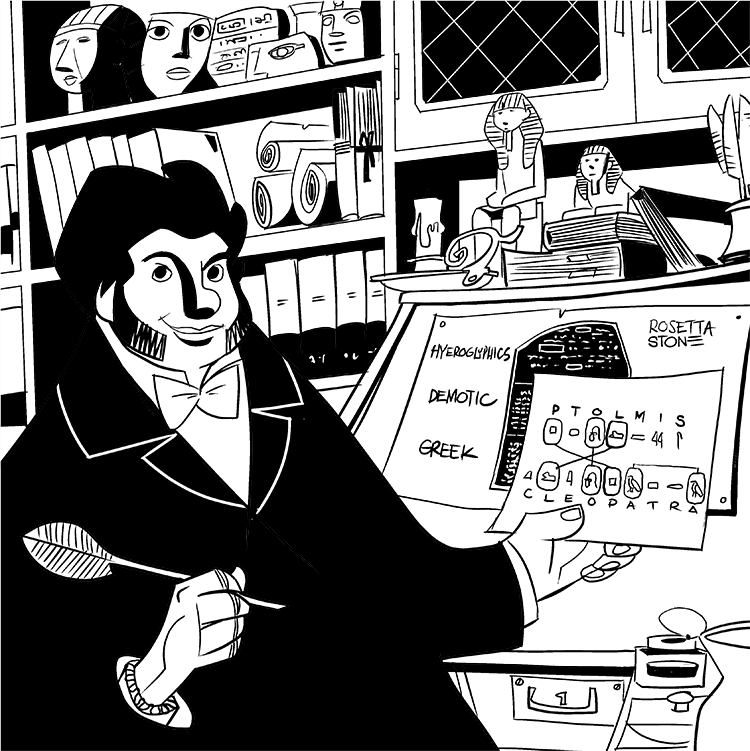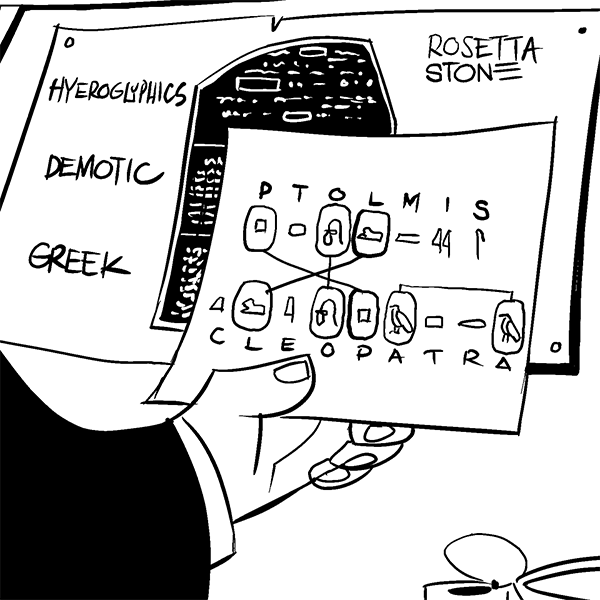At this moment, you are learning about ancient Egypt thanks to writing.
The symbols on the screen, arranged the way they are, represent sounds and ideas you understand, and so you can take in information.
Writing has been one of the primary drivers of human progress ever since it first emerged some three of four thousand years ago. And while it looks a lot different than the writing we do today, ancient Egyptian writing was not only unique in its style and form. It also had a profound impact on pretty much every language that exists today.
No big deal.

The Hieroglyph: Egypt’s Gift to the World
So what is a hieroglyph you ask?
Oh, you don’t know?
Okay, fine. Well, it’s basically a little picture. It could be of anything — a bird, a person, a mountain, a constellation, a plant. Anything.
But what makes the little picture special is that it means something, usually an idea or a concept. Hieroglyphs are basically the “letters” of the ancient alphabets, though they don’t look anything like the letters we use today.
Many ancient cultures used hieroglyphics. It seems to be an idea that has occurred naturally to early humans. But the Egyptians did something different with their hieroglyphs that helped make them even more special: they drew them to represent sounds.
Yes, you heard that correctly. Their hieroglyphs were not just ideas and concepts but also sounds that were spoken in their language.
As far as we can tell, the Egyptians were the first people to represent sounds with symbols. Their creation? The phonetic alphabet.
After it emerged in Egypt, the idea spread to other parts of Western Asia and Southern Europe. Cultures such as Greece, Phoenicia, and Babylon were like, “Hey! This is a pretty good idea!” and, over time, they adopted this system of writing.
So, while Egypt may not have invented the hieroglyph or been the only one to use it, theirs did something pretty special for humanity, helping create the world we now live in today.

Egyptian Scribes
Take one look at Egyptian hieroglyphs and your first thought is bound to be something like, “Woah! Those people could draw!”
Well, it was about as rare of a skill back then as it would be today. In fact, while the Egyptians had an advanced writing system and were quite dedicated at writing things down, the truth is that a very, very small part of the population could actually write.
This group, known collectively as “the scribes,” held a high position in Egyptian society largely because of the connection to the nobles/kings as well as the priests. Both groups needed people to write and so the scribes were brought into the upper tiers of Egyptian society.
Knowing that the scribe class was the only group that could write should make it unsurprising that there was basically no public education in ancient Egypt. There is evidence of some schooling, but teaching regular people to read and write was far from a priority.

Champollion
Champollion deciphered the Rosetta Stone.
The Loss of Egyptian Writing
Egypt first emerged as a kingdom around 2500 BC, and it would spend the next two and a half millennia as a unified, independent nation. However, the forces of time show no mercy and eventually Egypt fell.
It first fell to Persia, but then got its independence back, only to lose it again to Persia and then to Greece. The Greeks took control but respected Egyptian customs and culture. But soon the Greeks fell to the Romans and Egypt became a province of a new, growing empire.
Rome allowed Egypt to retain some of its practices, for some time, but by the 5th century, all “pagan” temples, those not dedicated to Christianity, were ordered closed. From that point on, Egyptian hieroglyphs were no longer scratched onto paper or carved into stone.
Over time, the language became lost. Arabic became the dominant tongue in Egypt, and no one remained who could read the ancient text. But then, in 1799, a discovery was made — the Rosetta Stone.
A tablet featuring a royal proclamation written in both Greek and Egyptian, this example of Egyptian hieroglyphs allowed scholars to decipher the Egyptian writing system and begin reading all the texts they had left behind. It’s due to these artifacts that we know as much as we do about Egypt today.
In the end, this stone is an example of writing fulfilling its purest function — bringing people together across time and space.
Written by Matthew Jones
Illustrated by Pablo Velarde Diaz-Pache
